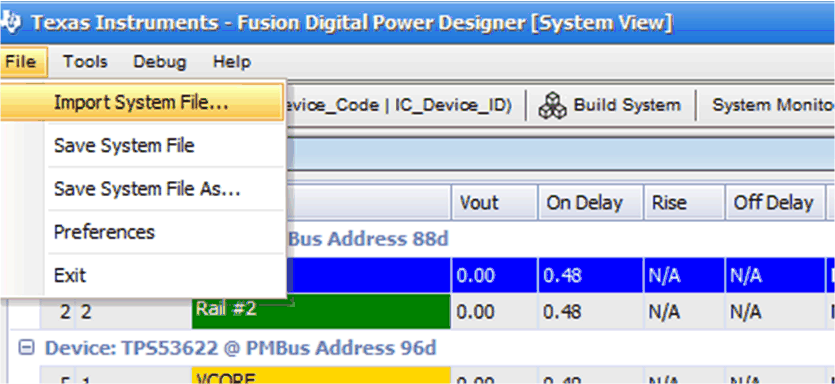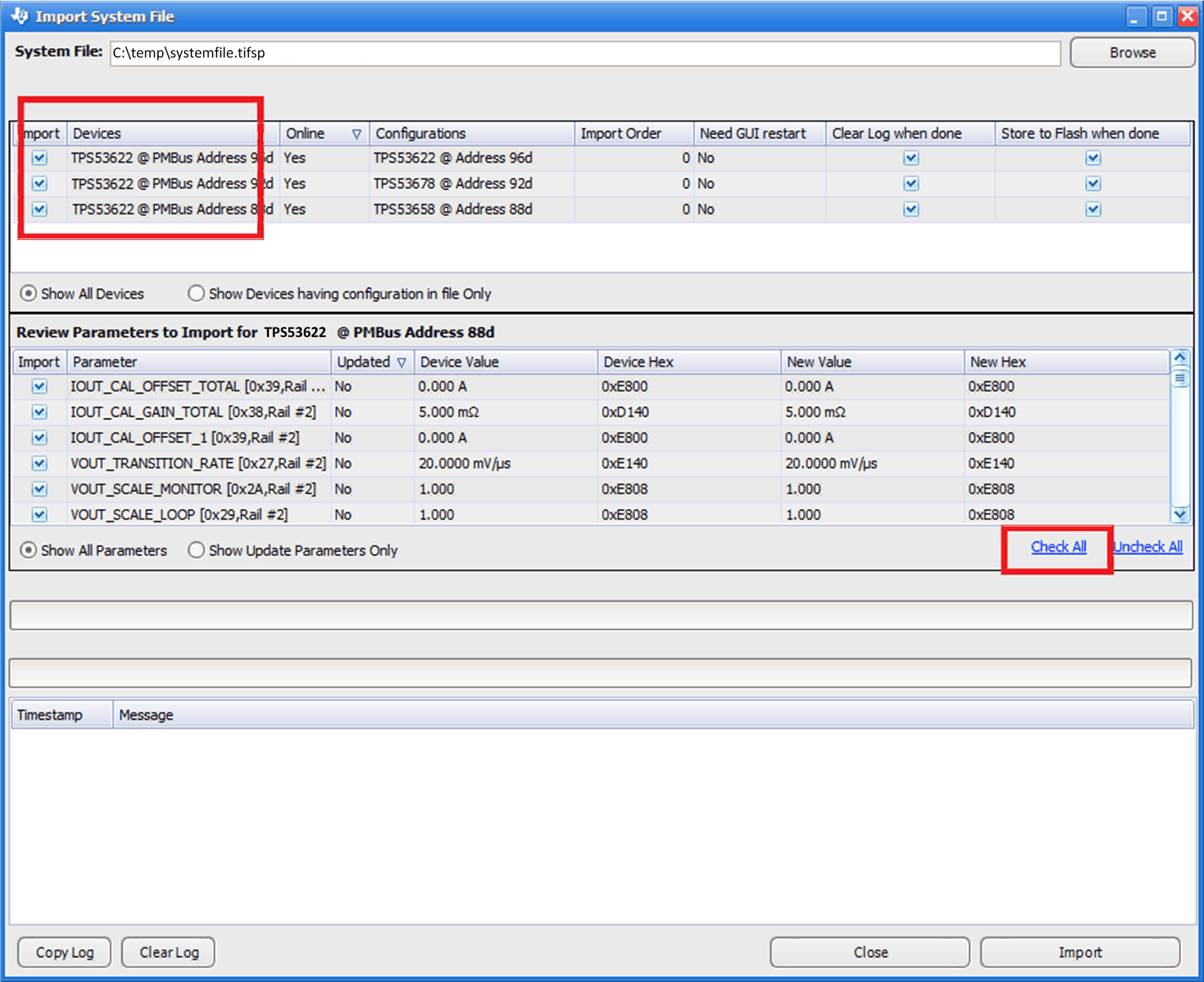SLUA888 May 2018 TPS53622 , TPS53659 , TPS53679 , TPS53681
-
NVM Programming for VR13 Power Controllers
- Trademarks
- 1 Introduction
- 2 Technical Overview
- 3
Use of TI Programming Tools
- 3.1
Fusion Digital Power Designer
- 3.1.1 Build and Export a System (.tifsp) File
- 3.1.2 View a Project File or System File Offline
- 3.1.3 Import a Project File to a Single Online Device
- 3.1.4 Import a System File to an Online System
- 3.1.5 Export CSV Script for Third Party Tools
- 3.1.6 Compare Two Project Files
- 3.1.7 Build a System File from Existing Project Files
- 3.2 Fusion Manufacturing Tool
- 3.3 TI Programming Board
- 3.1
Fusion Digital Power Designer
3.1.4 Import a System File to an Online System
- Connect the USB-GPIO interface to the board
- Apply 3.3 V to the V3P3 pins of the controller devices.
- Start the Fusion Digital Power Designer software.
- From File menu on the System View page, select Import System File...
- The default setting is that all of the devices are selected but none of the parameters are selected. Check the box in the Import column for each device.
- Click Check All to review all stored parameters.
- Click Import.
- Review the messages to make sure each device program is correctly. Imported System files contain an NVM store operation for each device by default. They need no separate NVM store command.
 Figure 25. Import System File
Figure 25. Import System File
 Figure 26. Check All Parameters
Figure 26. Check All Parameters
 Figure 27. System File Import Messages
Figure 27. System File Import Messages